List of 999 women on the Heritage Floor / Susan B. Anthony
This list describes the place setting for Susan B. Anthony on the table of Judy Chicago's art installation The Dinner Party . It is part of the list of 999 women on the Heritage Floor who are assigned to the respective place settings on the table. The names of the 999 women are on the tiles of the Heritage Floor, which is arranged below the table and belongs to the art installation.
description
The installation consists of a three-sided table, each with 13 historical or mythological personalities, thus a total of 39 people, from prehistory to the women's rights movement . These people were assigned a place setting at the table, consisting of an individually designed table runner, an individually designed plate, a goblet, knife, fork, spoon and serviette. The first page of the table is devoted to prehistory up to the Roman Empire , the second to Christianization up to the Reformation and the third from the American Revolution to the women's movement. Each place setting on the table is assigned additional personalities who have received an entry on the tiles of the Heritage Floor, which occupies the space under the table and the center of the space between the sides of the table. This list captures the personalities assigned to Susan B. Anthony's place setting. Your seat is on the third side of the table.
Hints
In addition to the names as they are used in German transcription or in scientific usage, the list shows the spelling chosen by Judy Chicago on the tiles.
The information on women who do not yet have an article in the German-language Wikipedia is referenced by the individual references listed under comments . If individual information in the table is not referenced via the main article, additional individual references are given at the relevant point. If there are any discrepancies between the information provided in Wikipedia articles and the descriptions of the work of art on the Brooklyn Museum website , this will also be indicated under Comments.
Place setting for Susan B. Anthony
Susan B. Anthony was born on February 15, 1820 in Adams , Massachusetts . Her father Daniel Anthony belonged to the Quaker denomination , her mother was a Methodist , and other ancestors belonged to other denominations, so there was great tolerance in the family. Her father was an advocate of abolitionism and temperamentalists , Susan Anthony later joined these movements, and she was one of the most important figures in the women's rights movement in the USA . At the age of 17 she was already collecting signatures for the "anti-slavery movement" and in 1856 became an agent for the American Anti-Slavery Society in New York State.
Together with Elizabeth Cady Stanton , whom she met in 1851, she founded the "New York Women's State Temperance Society" in 1852 after Anthony was prevented as a woman from speaking at a temperance conference. The Women's Loyal National League was founded in 1863, and resulted in the largest petition petition ever in US history. 400,000 signatures were collected to support the abolition of slavery. In 1866, Stanton and Anthony initiated the American Equal Rights Association , an organization that campaigned for equal rights for women, but also for African Americans.
From 1868 the two published The Revolution , a newspaper for women's rights, and in 1869 they founded the National Woman Suffrage Association . It emerged from a split in the women's movement and in 1890 it was merged with the rival American Woman Suffrage Association to create the National American Woman Suffrage Association . From 1876 onwards, Anthony and Stanton began working with Matilda Joslyn Gage on the History of Woman Suffrage , which eventually became a six-volume work. Anthony was arrested in 1872 after voting in her hometown of Rochester . In a high-profile court case, she was sentenced to pay a fine. She refused to pay the fine and the authorities waived any further action. Reached Stone and Anthony that the Congress by the Senator in 1878, Aaron A. Sargent an "Amendment" ( Amendment to the Constitution of the United States has been submitted) that women should give the right to vote. It was not ratified until 1920 as the 19th Amendment to the United States Constitution and popularly referred to as the Susan B. Anthony Amendment .
To reinforce her cause, Anthony traveled extensively and gave 75 to 100 speeches a year. She supported many state campaigns and also worked internationally for women's rights. She was one of the founders of the International Council of Women . At the World's Columbian Exposition (world exhibition in Chicago in 1893) she helped to hold the "World Congress of Representative Women".
At the beginning of her work for women's rights, Anthony had to assert herself against much resistance. Among other things, she was charged with attempting to destroy the institution of marriage. However, this changed and she received increasing support and recognition. Her 70th birthday was considered a national event and was celebrated in Washington with prominent members of the House and Senate as guests. President William McKinley celebrated her 80th birthday in the White House .
Even after her death she received numerous honors, for example she was the first woman and real citizen to be depicted on a coin from the United States, the Susan B. Anthony dollar , published in 1979 .
As a place setting for Susan B. Anthony on the dinner party table, her plate was designed in a distinctive three-dimensional shape. It rises "with great force from the surface in order to escape its limits" above the table and, according to Judy Chicago's request, should clarify her position as the "Queen of the Table". It is supposed to represent and honor the freedom struggle of the suffragette Anthony and that of her fellow activists. On the table runner, the names of leaders of the women's rights movement, including Amelia Bloomer , Mary Sewall and Anna Howard Shaw , radiate from the plate. These ribbons are patterned after embroidery used to commemorate loved ones in the 19th century. Some are affixed to the back with plates bearing Anthony's most famous saying, "Failure is Impossible". The back of the table runner is based on a “crazy quilt ”, in which random pieces of fabric and embroidery are joined together without a pattern, reminiscent of early American quilting. A satin ribbon adjoins the quilting area, on which the words “Independence is Achieved by Unity” can be read. The three initial letters on the front: "S", "B" and "A" are specially designed and are intended to represent her commitment to the cause, her relationship with Elizabeth Stanton and her place in US history.
| Surname | Spelling on the tile | Date of birth | cultural spatial assignment | Remarks | image |
|---|---|---|---|---|---|
| Aasta Hansteen | Hasta Hansteen | 1824 | Norway | Painter , writer and early feminist . |

|
| Adelheid Popp | Adelheid Popp | 1869 | Austrian Empire , Vienna | Austrian women's rights activist and socialist , founder of the proletarian women's movement in Austria. |

|
| Aletta Jacobs | Aletta Jacobs | 1854 | Netherlands | Doctor and women's rights activist . She was the first woman in the Netherlands to receive a license to practice medicine. In 1882 she founded the world's first birth control clinic. |
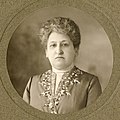
|
| Alexandra Gripenberg | Alexandra van Grippenberg | 1857 | Grand Duchy of Finland | Social activist, author, journalist, newspaper publisher and politician. Gripenberg was a leading voice in the women's rights movement in Finland around 1900. |
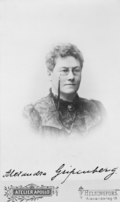
|
| Alice Stone Blackwell | Alice Stone Blackwell | 1857 | United States | Journalist , feminist and human rights activist . |

|
| Alice Paul | Alice Paul | 1885 | United States | Suffragette and women's rights activist . |
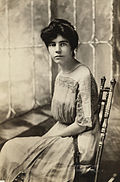
|
| Amalia Holst | Amelia Holst | 1758 | Mecklenburg | Pedagogue and women's rights activist . She worked for an education in the spirit of the Enlightenment and was an advocate of women's education . | |
| Annie Besant | Annie Wood Besant | 1847 | England | Socialist, suffragette, writer, speaker and supporter of Irish and Indian self-government. She later became a leading member of the Mystical Theosophical Society and moved to India. |
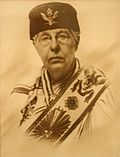
|
| Annie Kenney | Annie Kenney | 1879 | England | Militant working class suffragettes who held leadership positions in the Women's Social and Political Union and campaigned for women's suffrage. |

|
| Annie Smith Peck | Annie Smith Peck | 1850 | United States | Professor of Latin at Smith College in Massachusetts. She started mountaineering in 1894 and became a celebrity. In 1908 she made the first ascent of Huascarán Norte in Peru and thus held the height record for women. |

|
| Auguste Fickert | Augusta Fickert | 1855 | Austrian Empire , Vienna | Women's rights activist, social reformer and journalist. |
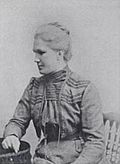
|
| Auguste Schmidt | Augusta Schmidt | 1833 | German Empire , Breslau | She was particularly committed to girls' education and women's rights. |

|
| Barbara Bodichon | Barbara Bodichon | 1827 | England | Landscape painter and women's rights activist, worked for women's education, rights and voting rights, played a key role in founding Girton College in Cambridge. |
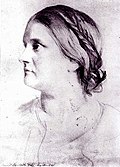
|
| Bertha Lutz | Bertha Lutz | 1894 | Brazil | Herpetologist , women's rights activist , diplomat, leading figure in the Pan American women's and human rights movement. |

|
| Caroline Norton | Caroline Norton | 1808 | England | Writer . Because of the problems she had because of the separation from her husband, she campaigned with some success to improve the rights of wives. |

|
| Carrie Chapman Catt | Carrie Chapman Catt | 1859 | United States | American suffragette who campaigned for the Nineteenth Amendment to the United States Constitution, which gave women in the United States the right to vote in 1920. |

|
| Carrie Nation | Carrie Nation | 1846 | United States | American, radical member of the temperance movement that rejected alcohol even before the advent of Prohibition . She is particularly noteworthy because she used a hatchet to attack alcohol-dependent establishments (mostly taverns). | |
| Charlotte Perkins Gilman | Charlotte Perkins Gilman | 1860 | United States | Writer and women's rights activist. Her literary breakthrough came in 1892 with the autobiographical story The Yellow Wallpaper . |

|
| Christabel Pankhurst | Christabel Pankhurst | 1880 | England | She campaigned, sometimes with radical means, for women's rights. |

|
| Constance Bulwer-Lytton | Constance Lytton | 1869 | England | Influential British suffragette activist, writer, speaker and prison reform activist, advocated for women and birth control. She sometimes used the name Jane Warton. |

|
| Eliška Krásnohorská | Eliška Krásnohorská | 1847 | Austrian Empire , Prague | Writer, translator and activist for women's rights in Bohemia. |

|
| Elizabeth Cady Stanton | Elizabeth Cady Stanton | 1815 | United States | Civil rights activist, abolitionist, and a leading figure in the US women's rights movement. |

|
| Emmeline Pankhurst | Emmeline Pankhurst | 1858 | England | Activist and leader of the British suffragette movement. |

|
| Emmeline Pethick-Lawrence | Emmeline Pethick-Lawrence | 1867 | England | Suffragette. |

|
| Frances Power Cobbe | Frances Power Cobbe | 1822 | Ireland | Writer, social reformer, anti- animal experimentation pioneer and leading women's suffrage activist. |

|
| Frances Willard | Frances Willard | 1839 | United States | Teacher, suffragette and social reformer. She was one of the founders of the Woman's Christian Temperance Union and was its president from 1879 until her death. |

|
| Frances Wright | Frances Wright | 1795 | Scotland , United States | Social reformer and one of the earliest and most fearless women's rights activists. Fought slavery . |

|
| Fredrika Bremer | Frederika Bremer | 1801 | Sweden | Writer and initiator of the Swedish women's movement . |

|
| Gunda Beeg | Gunda Beeg | 19th century | Upper Franconia , Nuremberg | She was a women's clothing reformer who helped found the first German women's reform organization and to design a new uniform blouse for the German telephone and postal service. | |
| Kalliroē Parren | Kallirhoe Parren | 1861 | Greece | Journalist and writer, active in the feminist movement in Greece. |

|
| Kate Sheppard | Katherine Sheppard | 1847 | England , New Zealand | Social reformer , suffragette, and first President of the National Council of Women in New Zealand. |
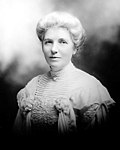
|
| Kathe Schirmacher | Kathe Schirmacher | 1865 | German Empire , Danzig | Politician (DNVP), women's rights activist and author. |

|
| Lucretia Mott | Lucretia Mott | 1793 | United States | Abolitionist and women's rights activist . |

|
| Lucy Stone | Lucy Stone | 1818 | United States | Reformer , publicist , suffragette, abolitionist , she was the first American wife to keep her maiden name. |

|
| Luise Otto-Peter | Luise Otto-Peter | 1819 | Kingdom of Saxony | Socially critical writer and co-founder of the bourgeois German women's movement . |
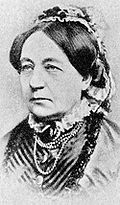
|
| Margarete Forchhammer | Margarete Forchhammer | 1863 | Denmark | Language teacher and well-known women's rights activist . |

|
| Mary Ann Muller | Mary Muller | 1820 | England , New Zealand | Teacher, suffragette and one of the first feminists in New Zealand. |

|
| Mary Church Terrell | Mary Church Terrell | 1863 | United States | Civil rights activist, founding member of the National Association for the Advancement of Colored People in 1909 , one of the first African American women to graduate from college, principal of a college. |

|
| Mary Lee | Mary Lee | 1821 | Ireland , Australia | Suffragette and social reformer in South Australia. |

|
| Millicent Garrett Fawcett | Millicent Fawcett | 1847 | England | British suffragette , a leader of the women's suffrage movement . |

|
| Minna Canth | Minna Canth | 1844 | Finland | Writer and women's rights activist. |

|
| Minna Cauer | Minna Cauer | 1841 | The German Imperium | Educator , activist in the radical wing of the bourgeois women's movement and journalist. |
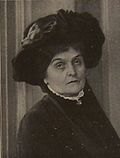
|
| Sophie Adlerparre | Baroness of Eagle Sparrow | 1823 | Sweden | Women's rights activist, editor, author and co-founder of the Fredrika Bremer Association . |
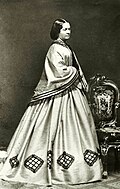
|
| Sylvia Pankhurst | Sylvia Pankhurst | 1882 | England | Activist in the suffragette movement . |

|
| Victoria Woodhull | Victoria Woodhull | 1838 | United States | Journalist , newspaper publisher , finance broker , spiritualist and well-known women's rights activist . |

|
| Vida Goldstein | Vida Goldstein | 1869 | Australia | A pioneering Australian feminist politician who campaigned for women's suffrage and social reform. She ran five parliamentary elections, was a vocal opponent of capitalism and White Australia politics, and a staunch pacifist who stood up for peace during the First World War . |
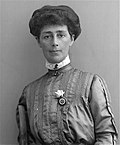
|
- Individual evidence
- ↑ Brooklyn Museum: Susan B. Anthony. In: brooklynmuseum.org. Retrieved November 1, 2019 .
- ^ Brooklyn Museum: Barbara Bodichon. In: brooklynmuseum.org. Retrieved November 1, 2019 .
- ^ Brooklyn Museum: Constance Lytton. In: brooklynmuseum.org. Retrieved November 1, 2019 .
- ↑ Brooklyn Museum: Gunda Beeg. In: brooklynmuseum.org. Retrieved November 1, 2019 .
- ↑ Brooklyn Museum: Kallirhoe Parren. In: brooklynmuseum.org. Retrieved November 1, 2019 .
- ↑ Brooklyn Museum: Mary Lee. In: brooklynmuseum.org. Retrieved November 1, 2019 .
- ↑ Brooklyn Museum: Baroness of Adlersparre. In: brooklynmuseum.org. Retrieved November 1, 2019 .
Web links
- Brooklyn Museum, Susan B. Anthony
- The Dinner Party on the website of Through the Flower , Judy Chicago's non-profit organization
